Targeting IspD for Anti-infective and Herbicide Development: Exploring Its Role, Mechanism, and Structural Insights
- PMID: 39749898
- PMCID: PMC11770629
- DOI: 10.1021/acs.jmedchem.4c01146
Targeting IspD for Anti-infective and Herbicide Development: Exploring Its Role, Mechanism, and Structural Insights
Abstract
Antimicrobial resistance (AMR) and herbicide resistance pose threats to society, necessitating novel anti-infectives and herbicides exploiting untapped modes of action like inhibition of IspD, the third enzyme in the MEP pathway. The MEP pathway is essential for a wide variety of human pathogens, including Pseudomonas aeruginosa, Mycobacterium tuberculosis, and Plasmodium falciparum, as well as plants. Within the current perspective, we focused our attention on the third enzyme in this pathway, IspD, offering a comprehensive summary of the reported modes of inhibition and common trends, with the goal to inspire future research dedicated to this underexplored target. In addition, we included an overview of the history, catalytic mechanism, and structure of the enzyme to facilitate access to this attractive target.
Conflict of interest statement
The authors declare no competing financial interest.
Figures



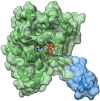
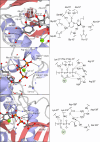





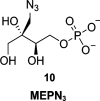







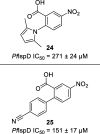



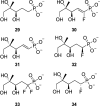
Similar articles
-
Synthesis and Evaluation of Halogenated 5-(2-Hydroxyphenyl)pyrazoles as Pseudilin Analogues Targeting the Enzyme IspD in the Methylerythritol Phosphate Pathway.J Agric Food Chem. 2020 Mar 11;68(10):3071-3078. doi: 10.1021/acs.jafc.9b08057. Epub 2020 Mar 2. J Agric Food Chem. 2020. PMID: 32078770
-
Synthesis and evaluation of hydroxyazolopyrimidines as herbicides; the generation of amitrole in planta.Pest Manag Sci. 2016 Dec;72(12):2254-2272. doi: 10.1002/ps.4264. Epub 2016 Apr 4. Pest Manag Sci. 2016. PMID: 26918632
-
Design and synthesis of sulfur-containing pseudilin analogs and their biological activity evaluation.Pestic Biochem Physiol. 2025 Mar;208:106311. doi: 10.1016/j.pestbp.2025.106311. Epub 2025 Jan 27. Pestic Biochem Physiol. 2025. PMID: 40015903
-
Bacterial acetohydroxyacid synthase and its inhibitors--a summary of their structure, biological activity and current status.FEBS J. 2012 Mar;279(6):946-63. doi: 10.1111/j.1742-4658.2012.08505.x. Epub 2012 Feb 27. FEBS J. 2012. PMID: 22284339 Review.
-
Targeting the methyl erythritol phosphate (MEP) pathway for novel antimalarial, antibacterial and herbicidal drug discovery: inhibition of 1-deoxy-D-xylulose-5-phosphate reductoisomerase (DXR) enzyme.Curr Pharm Des. 2007;13(11):1161-77. doi: 10.2174/138161207780618939. Curr Pharm Des. 2007. PMID: 17430177 Review.
Cited by
-
Benzo-ring modification on Malaria Box hit MMV008138: effects on antimalarial potency and microsomal stability.RSC Med Chem. 2025 Aug 15. doi: 10.1039/d5md00439j. Online ahead of print. RSC Med Chem. 2025. PMID: 40881307 Free PMC article.
References
-
- Menne H.; Köcher H. HRAC Classification of Herbicides and Resistance Development. Modern Crop Protection Compounds 2011, 5–28. 10.1002/9783527644179.ch1. - DOI
-
- Murray C. J. L.; Ikuta K. S.; Sharara F.; Swetschinski L.; Robles Aguilar G.; Gray A.; Han C.; Bisignano C.; Rao P.; Wool E.; et al. Global burden of bacterial antimicrobial resistance in 2019: a systematic analysis. Lancet 2022, 399 (10325), 629–655. 10.1016/S0140-6736(21)02724-0. - DOI - PMC - PubMed
-
- O’Neill J.Tackling drug-resistant infections globally: final report and recommendations; Government of the United Kingdom, 2016.
Publication types
MeSH terms
Substances
LinkOut - more resources
Full Text Sources

